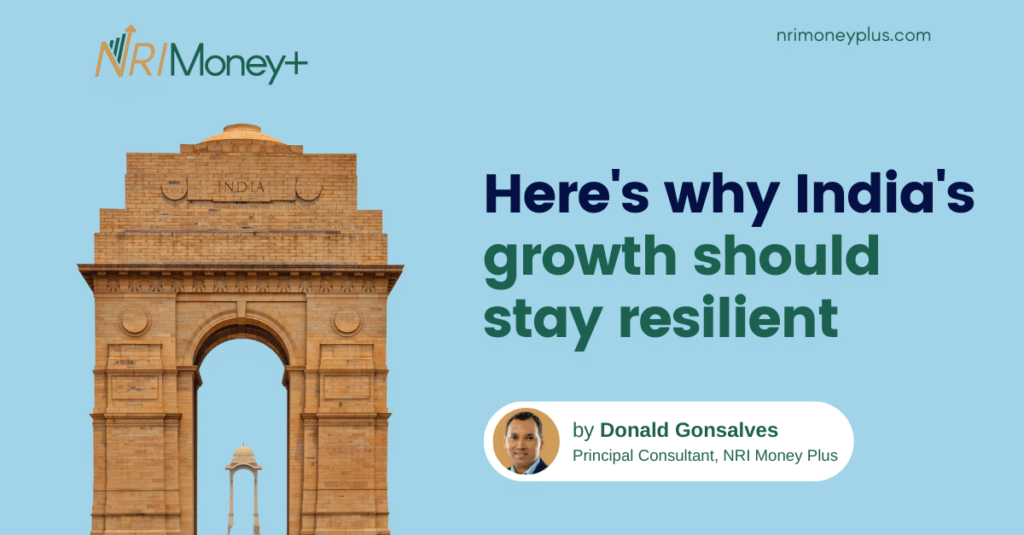In the developed world, the pattern of increasing rates slowing corporate investment and the real estate market will not occur in India. The demand for real estate in India has been stalled for several years, and the market is now more reliant on price sentiments than on interest rates.
Leverage in the corporate sector is at a cyclical low, and corporate expenditure will certainly increase. Due to increasing rates, India’s GDP growth could at most see a little slowdown.
The Indian housing cycle is not dependent on mortgage rates… The housing market in India is unique. In contrast to the west, unless a price appreciation perspective is included, the residential rental return of 0.3% is too low to establish a convincing investment argument, even at the lowest level of mortgage rate (6.5% a year ago).
Over the years 2013 to 2021, the average CAGR for property price growth was 2%, whereas the CAGR for sales volume growth was only 1%. In the last two years, prices have begun to rise, which is now luring in the repressed demand that is driving volumes.
As a result, the Indian housing cycle depends less on mortgage rates and more on price traction, which, given the pent-up demand and 12-year low inventory, should last for the next 4-5 years and ensure pricing power.
The developer sector has seen significant consolidation, which also implies that firms with more experience and maturity control the supply. A sudden increase in supply is not conceivable because of the numerous checks and balances that RERA (Real Estate Regulation Act) has added to the system.
…and history proves that.Mortgage rates increased from 8% to 11% during the finest time period for the Indian real estate markets by volume and pricing, which was 2004 to 2012 (prices increased 15% CAGR). Similar to this, from 2012 and 2020, mortgage rates decreased from 11% to 7% while volume fell by 30%. It is evident to us that changes in mortgage rates are not the primary factor influencing Indian real estate markets.

Mortgage rate vs property cycle. Source: Jefferies, SBI
Recent housing data corroborate the theory.Currently, the mortgage rate is 8.5%, up from 6.6% on January 22. On an annualised run-rate basis, home volume growth is up 25%. Over the past year, the mortgage sector has expanded by 21%.

Residential sales vs mortgage rate trend. Source: Jefferies, SBI, PropEquity
Pvt corp debt to GDP ratio fell substantially in the last decade.Private corporation debt to GDP ratio increased by 20 percentage points during the previous ten years for other top-10 economies in the world, reaching 103% of GDP.
India’s GDP is far lower, at 53%. Due to a number of circumstances, including the NPL cycle, bankruptcy legislation, disruptive GST rollout, demon, etc., India had a period of decline in business expenditure. We think the negative effects of these events are now completely reflected in the data since the corporate D/E ratio has fallen to a low of 0.6x.

Source Jefferies, BIS
Corporate spending now showing initial signs of recovery. In India, short-term rates have increased by almost 2 percentage points from their lows, and if they rise by another 1 percentage point, the GDP will be affected by rising interest rates by an additional 1.8%. (calculated as incremental interest outgo as a per cent of nominal GDP).

If everything else stays the same, the equivalent ratio for the developed world would represent a sizeable 4-6 ppts of GDP, on far lower growth. However, the fundamentals in India are really improving (as seen by greater credit growth, order flow increase, etc.), thus higher interest rates won’t, in our opinion, result in decreased corporate expenditure.

Donald G. is the Principal Consultant at NRI Money+. He specialises in creating personalised financial plans for NRIs (Non-Resident Indians) and HNI (High Net-worth Individuals).



